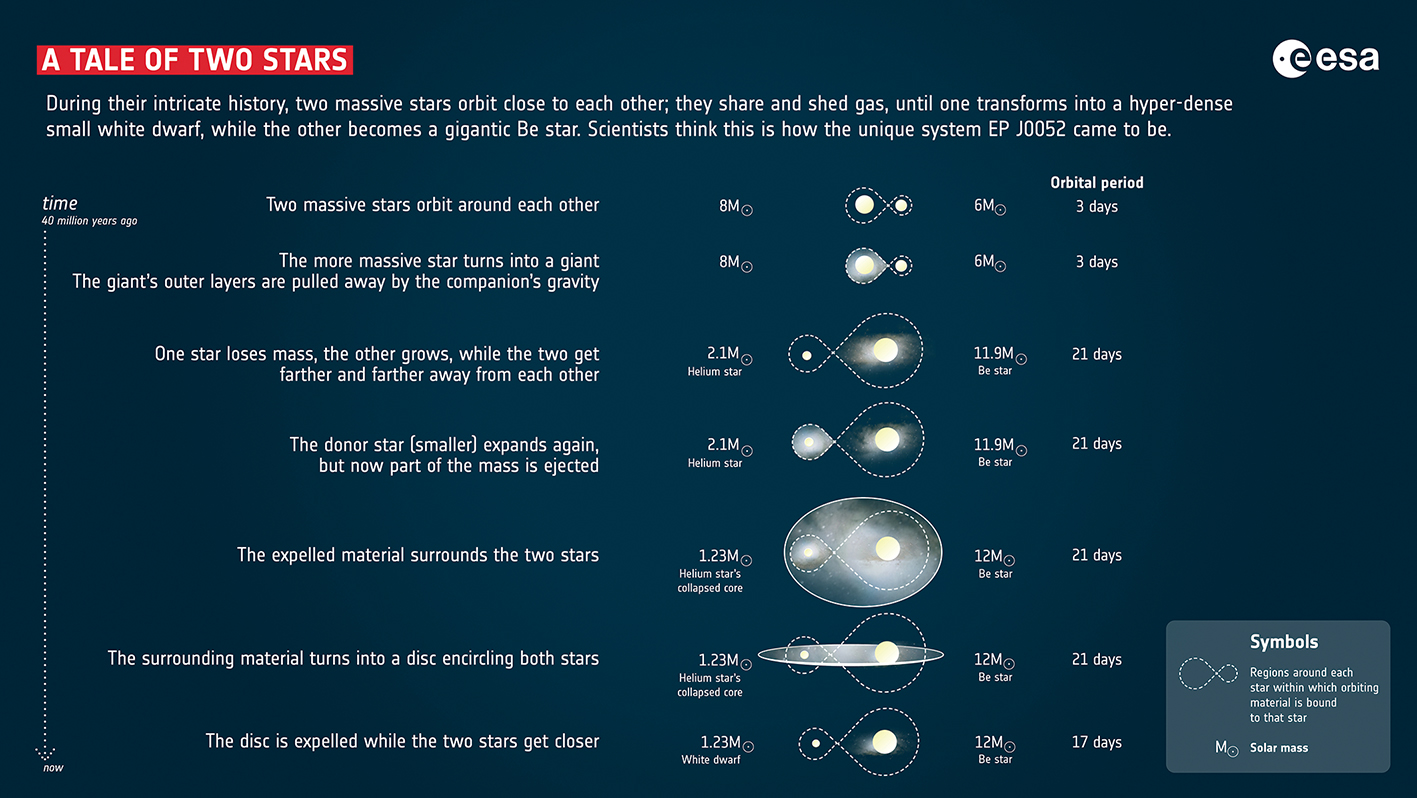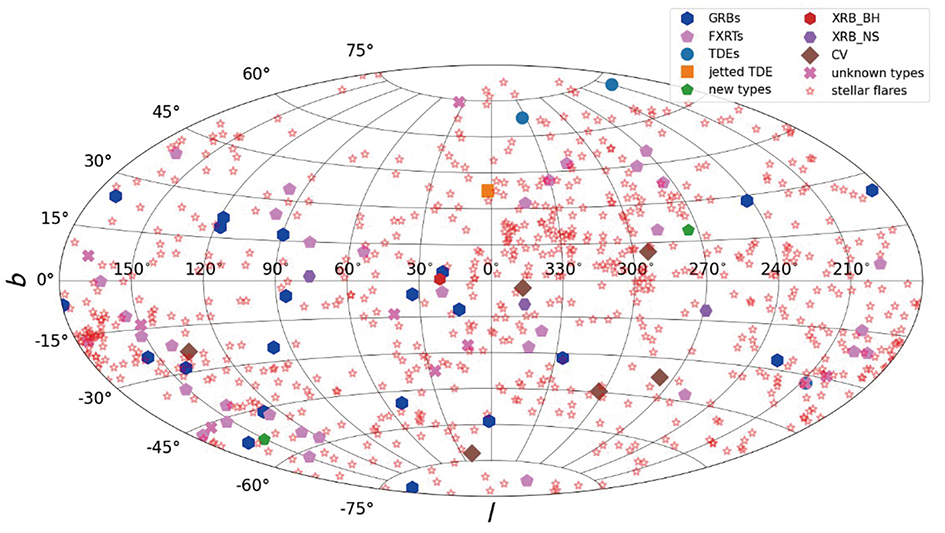By SONG Jianlan
Awell-anticipated wide-field X-ray focusing imager, the Einstein Probe (EP, also named “Tianguan” in Chinese) has caught the eye of astronomers since its launch in January 2024. Initiated and sponsored by the Chinese Academy of Sciences (CAS), and developed in cooperation with the European Space Agency (ESA), the Max Planck Institute for Extraterrestrial Physics (MPIEP) in Germany and the Centre National d’Études Spatiales (CNES) in France, it is designed with excellent sensitivity and unprecedentedly wide field of view for soft X-ray observations on transients, hence is expected to detect and observe very dim and faint signals given off by remote objects.
The satellite formally entered science operation in July 2024, and was officially delivered to science users on October 31, 2024, fueling new hope for time-domain astronomy research.

After 6 years of engineering development and more than 10 years of technology R&D, the Einstein Probe satellite, a well-anticipated X-ray focusing instrument for time-domain astronomy observations, was successfully launched from the Xichang satellite launch center on January 9, 2024. On October 31, the satellite was officially delivered to the science users. By the end of March 2025, the WXT had detected over 100 transient events and about 1,000 stellar flares. (Image credit: EP, CAS)
LEIA — The Herald
Now, EP has proven its excellent performance as promised, by picking up dim and faint X-ray transient signals from remote celestial objects, including the nuances of outburst about 12.5 billion lightyears away from the infancy of our cosmos. Details of such high-redshift sources have long been missed out in observations, due to difficulties in X-ray focusing technology. Now scientists can anticipate a wave of fantastic discoveries with this new instrument.
Actually, before its formal launching, the Lobster Eye Imager for Astronomy (LEIA), an experimental module for its Wide-field X-ray Telescope (WXT), had demonstrated outstanding sensitivity and broad effective area for observation. LEIA covers a field of view of 340 square degrees (18.6°×18.6°), merely 1/12 does nowadays WXT; this, however, was at least one hundred times bigger than other focusing X-ray imagers at that time, making it the first ever truly wide-filed X-ray focusing imaging telescope. Working from the soft X-ray band, LEIA successfully observed the details of a gamma-ray burst (GRB 230307A) in a joint observation together with GECAM, the Gravitational wave high-energy Electromagnetic Counterpart All-sky Monitor, another satellite developed and operated by CAS. The data from their observations help understand the nature of the GRB’s central engine, indicating that a compact magnetar, a swiftly rotating neutron star with a strong magnetic field, could have risen from the merging of two neutron stars to fuel the GRB. The results were published in National Science Review on December 16, 2024.
After the launching, EP — now armored with the full set of “lobster-eye” modules that mount up to a field of view of ~3,600 square degrees — set out to make surprising discoveries, even during its in-orbit testing.
Sharp “Lobster Eye” for Early Universe
On March 15 of 2024, the instrument detected a high-redshift X-ray source EP 240315a that temporally and spatially coincided with GRB 240315C, a long GRB detected by multiple instruments. Benefiting from its high sensitivity, EP-WXT captured the source’s early engine activation and extended late engine activity through a continuous detection. The redshift of the source was figured out as high as 4.859 by the spectroscopic observations made by the Very Large Telescope, and confirmed to be of cosmological origin. The discovery was later published online in Nature Astronomy on January 23, 2025. As shown in the paper, EP gives much more detailed nuances of the source from soft X-ray wavelengths in comparison with conventional instruments from gamma-ray bands, and covers much longer a duration of emission. The source has triggered the instrument at a very low threshold of energy, demonstrating the latter’s promising capability of capturing dim, weak signals from afar.
Based on its early observation during the commissioning phase, simulation predicts that the EP-WXT is capable of detecting X-ray events similar to EP 240315a at a redshift as high as 7.5 (with a signal-noise rate over 7) or even higher (at signal-noise rates lower than 7). This means, the instrument can pick up the extremely weak messages sent from about 700 million years after the Big Bang — For our cosmos of 13.8 billon years old, this represents a valued snapshot from its infancy, and might reveal some secret episodes of its own formative times and early development.

“A tale of two stars”: the interactions and evolutionary process of the odd stellar pair as reconstructed by ESA scientists based on the signals captured by EP. (Credit: ESA)
Unique Instrument for Soft X-ray Detection
In the following months of its commissioning phase, the instrument continued to demonstrate its performance and productivity. Ensuing the detection of EP 240315a, it discovered an interesting X-ray event from the Small Magellanic Cloud (SMC), a galaxy neighboring to our home Milky Way, and registered the emission as EP J0052 on May 27, 2024. The detection triggered a joint observation by the Swift and NICER X-ray telescopes operated by NASA; also, the XMM-Newton by ESA joined the follow-up observation 18 days later. The data from different wavebands offered opportunities to investigate the chemical elements from the explosion. Scientists concluded that the X-ray flash has come from the merger of a rare couple: A Be star measured over 10 times of solar mass, and a compact white dwarf of about the same mass as our Sun. Based on the observation, a team led by ESA scientists on the EP team reported their discoveries in the Astrophysical Journal Letters on Feb 19, 2025. The discovery significantly enhances human understanding of massive star interactions and evolutionary processes.
The detection on EP J0052 marked the first time ever for scientists to have captured the soft X-ray signals from such a rare stellar pair from its onset till decay. “Outbursts from a Be-white dwarf duo have been extraordinarily hard to catch, as they are best observed with low energy X-rays. The advent of EP offers the unique chance to spot these fleeting sources and test our understanding of how massive stars evolve,” remarks Erik Kuulkers, ESA Project Scientist for EP. “This discovery showcases the game-changing capabilities of this mission,” he adds.

Transients detected by EP as of March 2025. (Image credit: EP Science Center)
Game Changer
After the testing and calibration, EP was delivered to science users as a science instrument on October 31, 2024. As of March 2025, EP had detected over 100 transient events and about 1,000 stellar flares. Besides, it has sent over 100 alerts informing the global astronomical community with localizations of important objects, initiating multiple follow-up observations participated by both ground- and space-based telescopes from different wavelengths.
The transient candidates detected by EP feature an unprecedented diversity. The sources fall into different types, ranging from stars, white dwarfs, neutron stars, black holes of different masses, gamma-ray bursts to supernova; the durations of them vary a lot, spanning from dozens of seconds to months. Among them are some novel sources whose nature are pending for identification, and the ensuing discoveries will update or even revise our understanding of the dynamic universe.
During its in-orbit operation, EP will continuously conduct real-time dynamic all-sky survey for transients and explosive events from the soft X-ray band, and will share the localizations of important objects via alerts to usher synchronized follow-up observations.
“The successfully launch and operation of EP will provide important data support for global astronomical research,” remarks Prof. YUAN Weimin, Principal Scientist of EP at the National Astronomical Observatories, CAS: “It will facilitate the observation and research in the field of high-energy time-domain astronomy.”
So far, over 300 scientists from over 10 countries are working with EP.
Reference
Liu, Y., Sun, H., Xu, D. et al. (2025) Soft X-ray prompt emission from the high-redshift gamma-ray burst EP240315a. Nature Astronomy, https://doi.org/10.1038/s41550-024-02449-8
Marino, A., Yang, H. N., Coti Zelati, F. et al. (2025) Einstein Probe discovery of EPJ005245.1−722843: a rare BeWD binary in the Small Magellanic Cloud? The Astrophysical Journal Letters, 980 L36, https://doi.org/10.3847/2041-8213/ad9580
Sun, H., Wang, C.-W., Yang, J. et al. (2024) Magnetar emergence in a peculiar gamma-ray burst from a compact star merger. National Science Review, nwae401, https://doi.org/10.1093/nsr/nwae401

